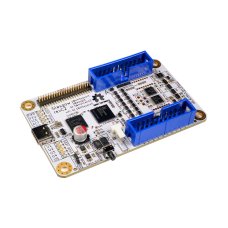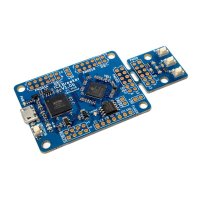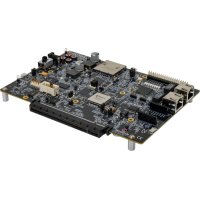A Tool for Exploring Digital Interfaces
Glasgow is intended for hardware designers, reverse engineers, digital archivists, electronics hobbyists, and anyone else who wants to communicate with a wide selection of digital devices with minimum hassle. It can be attached to most devices without additional active or passive components, and it provides extensive protection from unexpected conditions and operator error.
The Glasgow hardware can support many digital interfaces because it uses reconfigurable logic. Instead of offering just a small selection of standard hardware supported interfaces, it uses an FPGA to adapt — on the fly — to the task at hand without compromising performance or reliability, even for unusual, custom or obsolete interfaces.
The Glasgow software is a set of building blocks designed to eliminate system complexity. Each protocol is packaged into a self-contained applet that can be used directly from the command line or integrated into a more complex system. Using Glasgow does not require any programming knowledge, though it is much more powerful if you know a bit of Python.
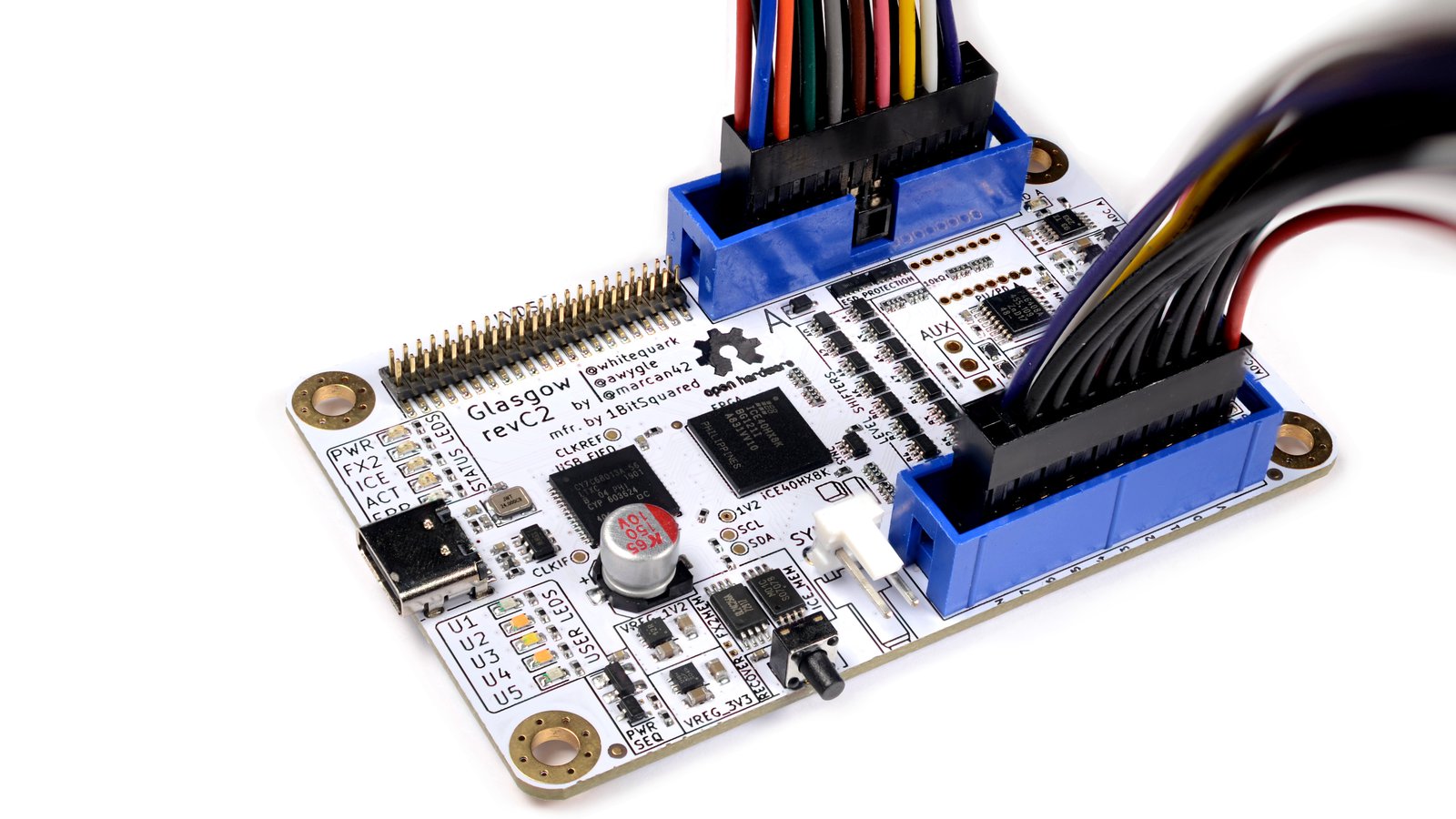
Use Cases
- To illustrate some strengths of Glasgow, here are a few usage examples.
USB-to-Serial adapter
- Glasgow can be used as a USB-to-serial adapter, but better.
Unlike traditional serial adapters it can auto-detect the target voltage and "mirror" it. It will auto-detect the baud rate of the target and follow it on the fly. It can directly interface to inverted signal UART interfaces, which would ordinarily require additional debugging components, like buffer transistors.
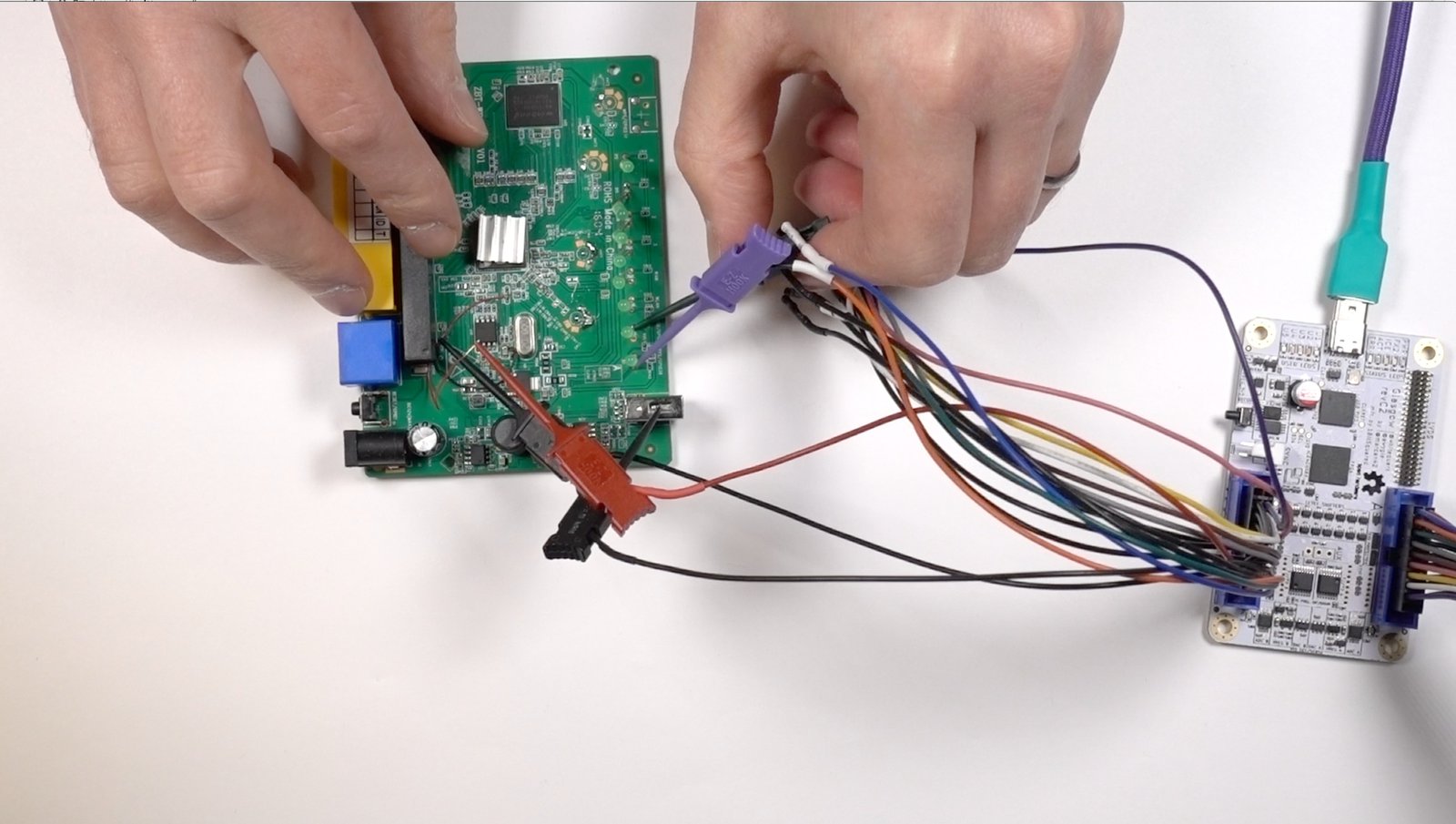
Environmental Sensor Logger
Glasgow has built-in support for InfluxDB. So any applet that reads out sensors can directly log the data and you can visualize them in Grafana with very minimal effort. We already have support for some CO2 and particle sensors.
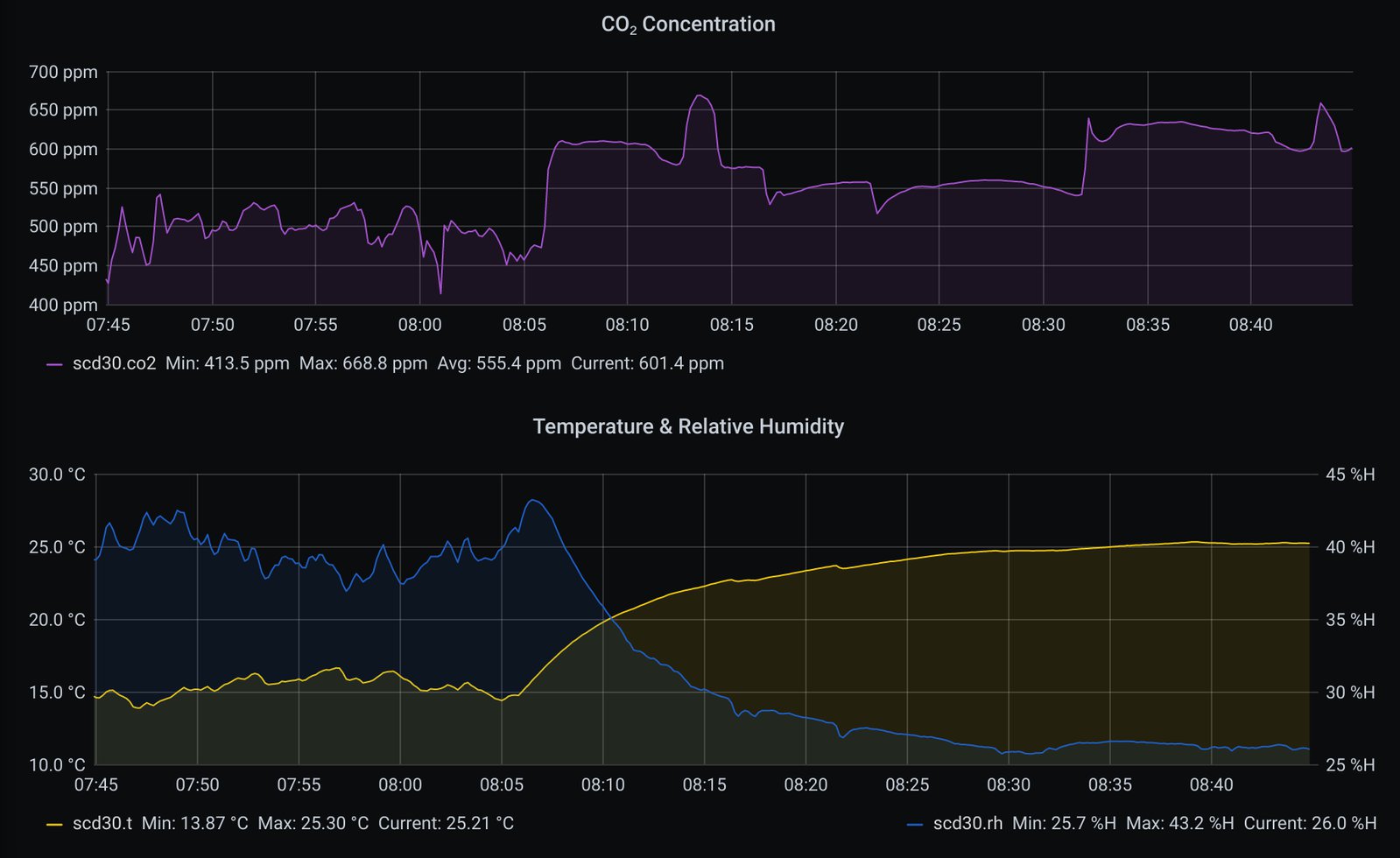
RGB LED Interface
Today there are a lot of different LED display technologies available. Like "intelligent" RGB LEDs with built in PWM controllers, for example WS2812 or APA102. There are LED matrix display panels with myriad of shift register based interfaces like HUB75, HUB75e, HUB8, HUB12 and many more.
All of them use fairly nonstandard protocols. From timing-driven one-wire interfaces, through fairly normal SPI interfaces to multichannel parallel shift register interfaces. Typical protocol adapters only provide a specific subset of hardware supported interfaces. Everything beyond that has to be implemented with so called bit-banging. Bit-banging means that the processor or the PC has to control I/O step from software, in some cases even through USB. This is cumbersome if not impossible due to the timing constraint and USB speed.
In the case of Glasgow, that can be easily reconfigured. It is possible to experiment and prototype with these devices quickly and with minimal hassle. Just a few lines of Amaranth HDL and Python and you are ready to go.
If you are interested how it is done, watch Attie implement HUB75 interface support.
Safety
- Safety is an important design requirement for Glasgow, we addressed it in multiple ways.
Protective case
- We designed a beautiful CNC-milled aluminum case to keep your Glasgow safe from damage — from short circuits on the bench or the exercise shorts in your travel bag. It’s available as an option.
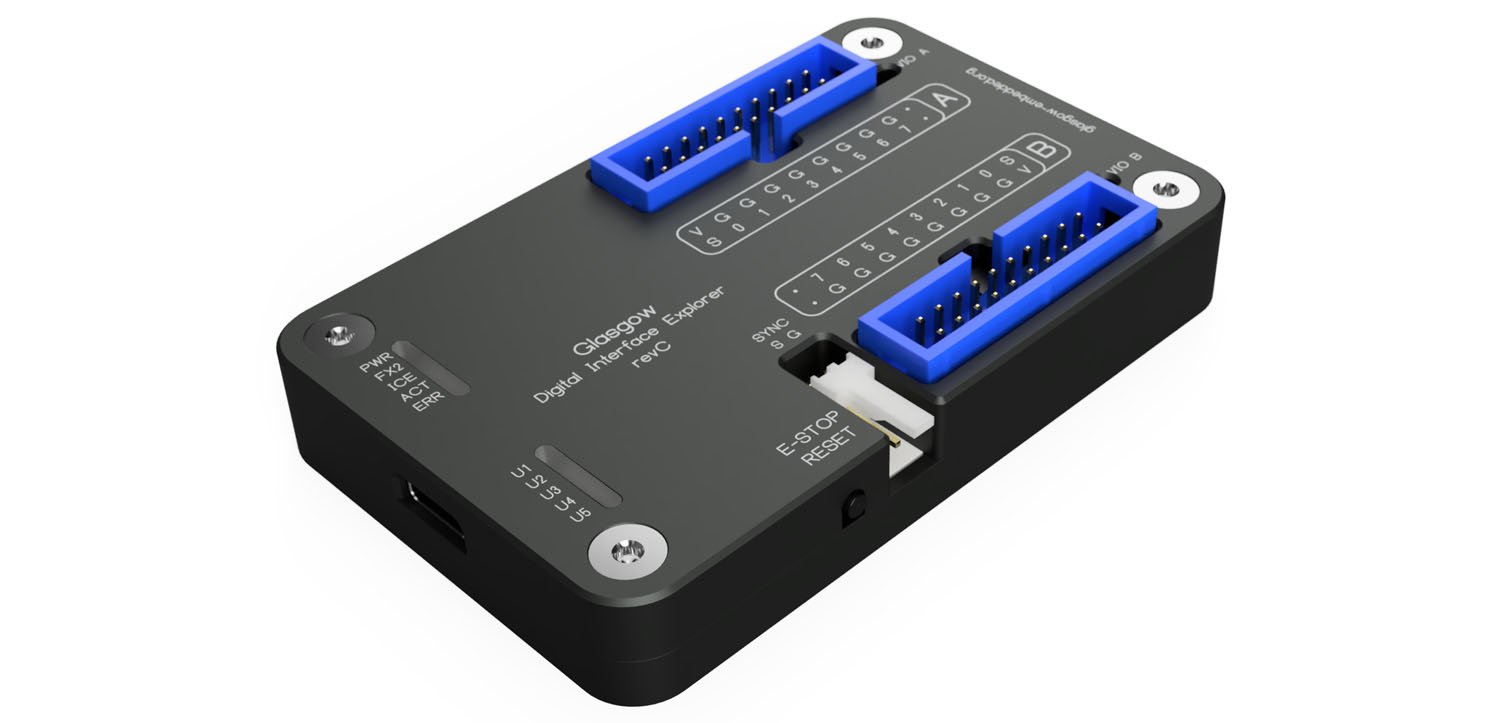
ESD, Under- and Over-Voltage protection
- Working with untested or unknown devices can be risky. Short circuits, electrostatic discharge, high voltages can quickly destroy our project or test equipment. Glasgow is ready for this. All I/O are ESD, over- and under-voltage protected. We have made sure that the hardware will survive a I/O and supply short and not reset, but rather detect a set current threshold fault and act accordingly thanks to I/O supply current monitoring.
E-Stop/Reset
- For the urgent situations where one might want to quickly put Glasgow back in safe mode; we have added an easy to reach E-Stop/Reset button. It is located on the side of the board, so a quick squeeze of the Glasgow will bring it back into an electrically safe state. This button is hardwired to the Glasgow circuitry and results in a safe reset even if the software or gateware is faulty.
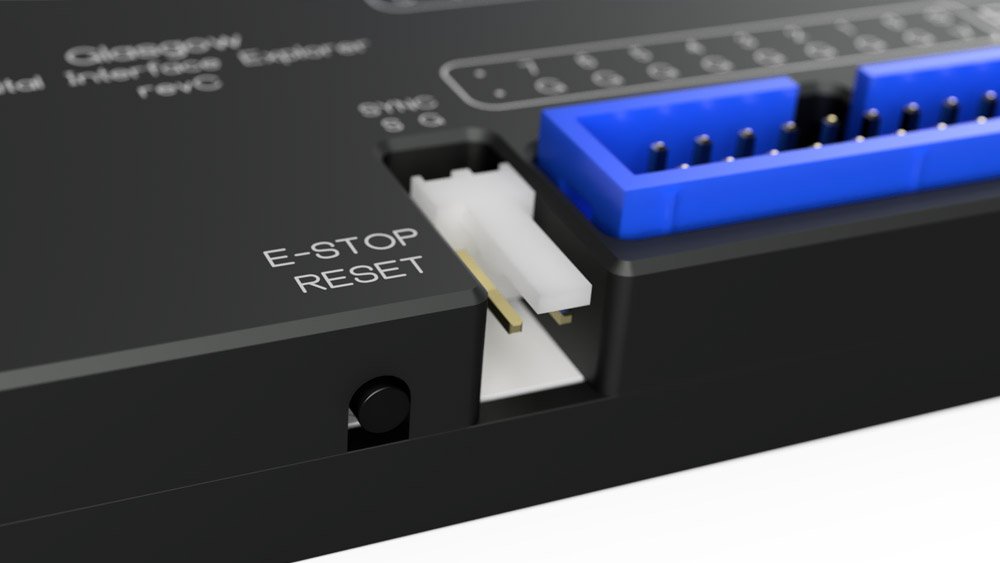
Features:
Glasgow is already capable of performing these tasks:
- Standard Protocols
- Communicating via UART
- Automatically determining and following the baud rate of the device under test
- Initiating transactions via SPI or I²C
- Receive I²C transactions
- Logic analyzer, generates VCD file for analysis with GTKWave or Sigrok
- Memory Chips
- Reading and writing 24-series EEPROMs
- Reading and writing 25-series Flash memories
- Determining memory parameters via SFDP
- Reading and writing ONFI-compatible Flash memories
- Determining memory parameters via ONFI parameter page
- Reading and writing 27/28/29-series EPROMs, EEPROMs and Flash memories
- Determining the extent of floating gate charge decay and data rescue
- Microcontroller/CPU Programming and Debugging Interfaces
- Programming and verifying AVR microcontrollers with SPI interface
- Automatically determining unknown JTAG pinouts
- Present JTAG interface to OpenOCD
- Playing back JTAG SVF files
- Debugging ARC processors via JTAG
- Debugging some MIPS processors via EJTAG
- Debugging some microcontrollers via SWD (WIP)
- Probe microcontrollers via the TI Spy-Bi-Wire interface
- Programming Microchip (Atmel) AVR microcontrollers via SPI
- Programming Renesas M16C microcontrollers via UART
- Programming Microchip MEC16xx embedded controllers via JTAG
- Programming nRF24LE1 and nRF24LU1(+) microcontrollers
- FPGA/CPLD Bitstream Programming Interfaces
- Programming and verifying XC9500XL CPLDs via JTAG
- Programming iCE40 FPGA FLASH and SRAM
- Programming Xilinx Spartan-6 FPGAs via JTAG
- Programming Xilinx XC500XL CPLDs via JTAG
- Radio Interfaces
- Communicating using nRF24L01(+) radios
- Sensor Interfaces
- Measuring temperature, pressure, and humidity with Bosh BMx280 sensors
- Measuring voltage with AVIA Semiconductor HX711
- Measuring voltage, current and power with TI INA260 sensors
- Measuring air quality with Plantower PMx003 sensors
- Measuring CO2, humidity, and temperature with Sensirion SCD30 sensors
- Display & Video Interfaces
- Displaying characters on HD44780-compatible LCDs
- Displaying images on Pervasive Display EPD panels
- Capturing video stream from RGB555 LCD bus
- Displaying video via VGA
- Displaying video via WS2812 LEDs
- Audio Interfaces
- Playing sound using sigma-delta digital to analog conversion
- Synthesizing sound using a Yamaha OPL chip and playing it in real time on a webpage
- Other Misc Interfaces
- Configuring TPS6598x USB PD controllers
- Reading raw modulated data from 5.25" and 3.5" floppy drives
- Communicate with IBM PS/2 peripherals
- Receiving axis and button information from PS/2 mice
- CAN Bus (WIP)
Note: features marked with "WIP" are Work In Progress, which means they are preview only and require more work or even a rewrite.
Most of the above can be done with only a Glasgow revC board, some wires, and — depending on the device under test – external power. In most cases no additional front end circuitry is needed.
Technical Specifications:
- iCE40HX8K Lattice Semiconductor FPGA (supported by a fully open source FPGA
- flow: Yosys, nextpnr, icestorm)
- FX2 high-speed USB interface capable of 480 Mbps throughput
- Two 8-channel I/O banks provide 16 highly flexible I/O
- Each I/O bank has a dedicated programmable linear voltage regulator,
- configurable from 1.8 V to 5 V and capable of providing up to 150 mA of power
- Each I/O bank has a dedicated sense ADC capable of monitoring the I/O bank
- voltage and current, with settable interrupt trigger thresholds
- Each I/O is capable of a theoretical speed up to 100 MHz (actual speed depends on many factors)
- Each I/O has a dedicated voltage level shifter with individual direction control
- Each I/O has a dedicated, software controlled 10K Ohm pull-up/-down resistor
- All I/O have ESD protection diodes
- An optional set of 14 differential pair I/O, connected directly to the FPGA
- without any front end circuitry, can be used for high speed interfaces (only
- exposed on the circuit board, not accessible in combination with a case)
- A dedicated SYNC connector
- Five user-controllable LEDs connected to the FPGA
- Five status LEDs
Legend
Block Diagram
Built on Python & the Open Source iCE40 Toolchain
Glasgow Interface Explorer is written in Python 3. The interface logic that runs on the FPGA is described using Amaranth, which is a Python-based domain-specific language (DSL). The supporting code that runs on the host PC is written in Python with asyncio. This way, the logic on the FPGA can be assembled on demand for any requested configuration, keeping it as fast and compact as possible, and code can be shared between gateware and software, removing the need to add error-prone "glue" boilerplate.
Glasgow would not be possible without the IceStorm, open source iCE40 FPGA toolchain, which is reliable and extremely fast.
For instance, it only takes a few seconds to rebuild the FPGA bitstream for the UART protocol. When developing a new applet, it is rarely necessary to wait for the toolchain.
Implementing reliable, high-performance USB communication is not trivial – packetization, buffering, and USB quirks add up. Glasgow abstracts away USB. On the FPGA, applet gateware writes to or reads from a FIFO. On the host, applet software writes to or reads from a socket-like interface. On a modern PC, idiomatic Python code can communicate at maximum USB 2 "high-speed" bandwidth. Moreover, this design is relatively future proof, as it can support different transports, such as Ethernet, without requiring changes to applet code.
Debugging new applets can be hard, especially where bi-directional buses are involved. Glasgow provides a built-in, cycle-accurate logic analyzer that can relate the I/O pin level and direction changes to commands and responses received and sent by the applet. The logic analyzer compresses waveforms and can pause the applet if its buffer is about to overflow.
Support & Documentation:
Glasgow has been developed and refined over the last few years by a dedicated group of engineers. Many people have built their own hardware and are already using it in production. A lot of these early adopters are contributing additional applets and documentation. We welcome you to drop in to the Glasgow Discord channel or Glasgow Freenode IRC channel to talk about your ideas and ask questions!
- For more technical discussion of Glasgow, please visit our GitHub Glasgow Organization.
- We have a section of the 1BitSquared Forum dedicated to Glasgow.
- Give esden and whitequark a follow on Twitter. Both of them regularly post Glasgow updates.
Package Includes:
- 1 xGlasgow revC hardware
- 1 x Two fly-wire cables to easily connect the Glasgow to 0.1 inch pin headers or IC hooks
- 1 x Sync cable to connect multiple Glasgows together and synchronize them
- 1 x USB-A to USB-C cable that supports the USB 2.0 HighSpeed standard
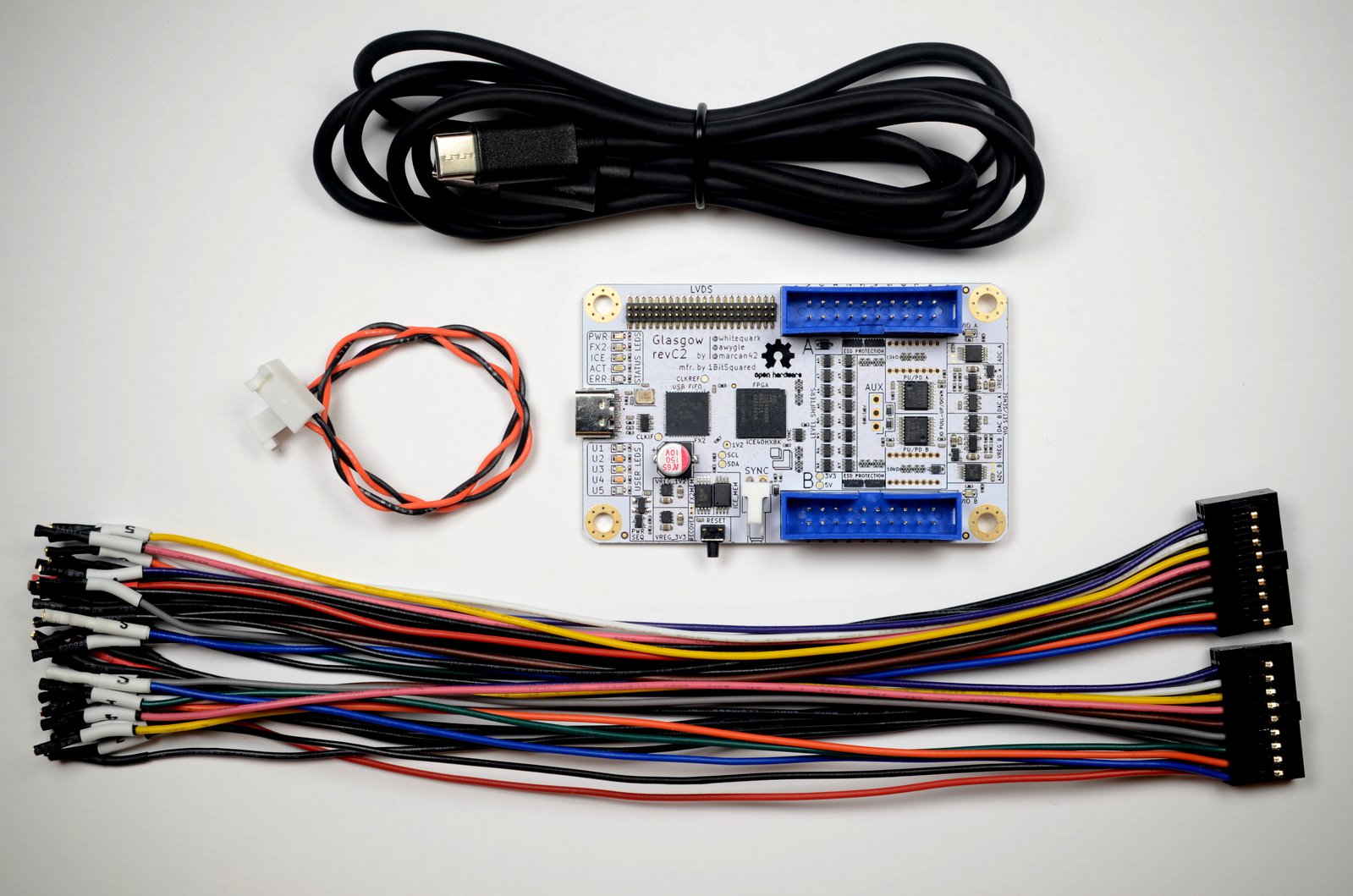
Additional Accessories:
The aluminum case option adds:
- 1 x Anodized aluminum CNC milled case
- 1 x Lightpipes for the LEDs
- 1 x Screws
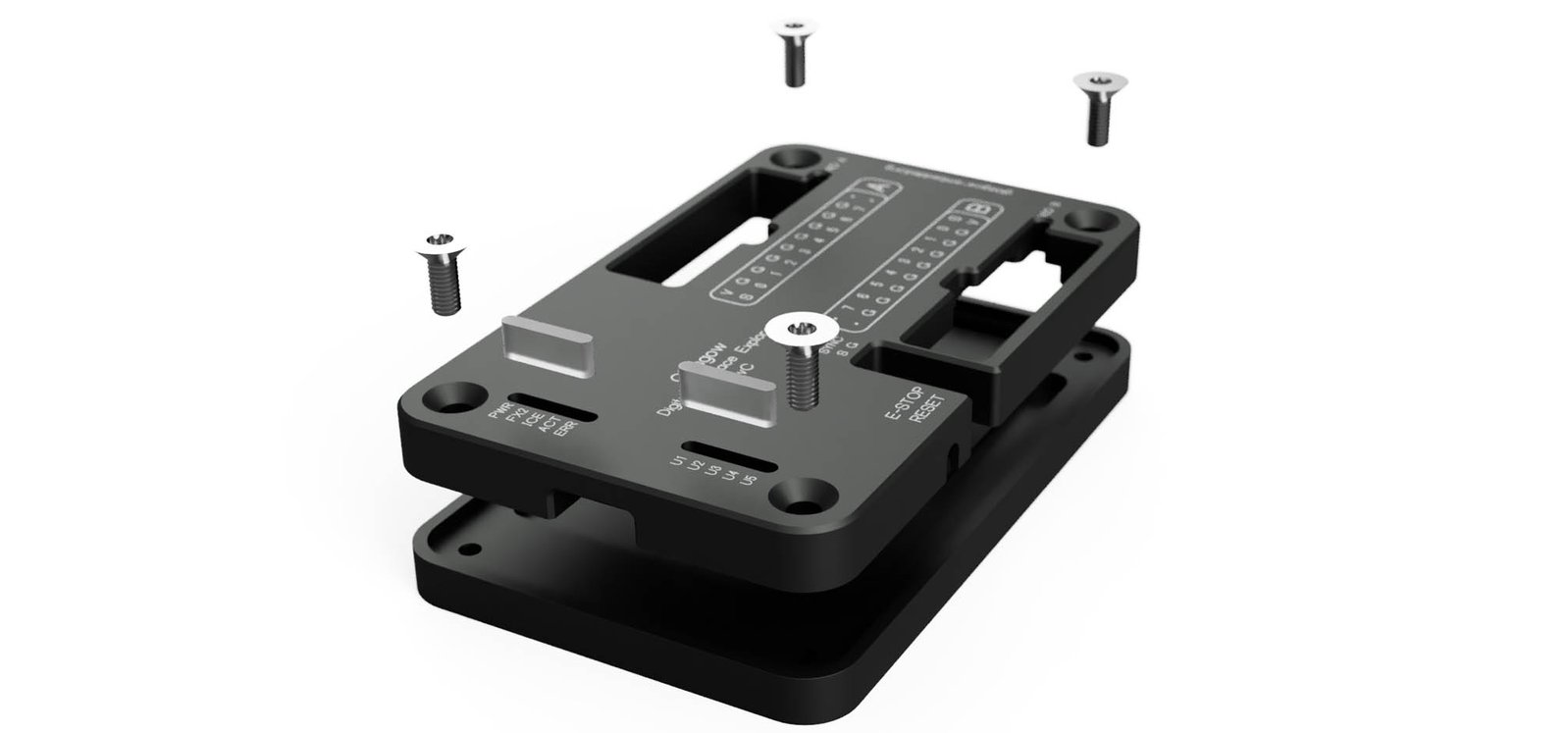
The case comes as a kit, and is easy to assemble. The case covers up some of the optional connectors on the Glasgow PCB. If you need access to these connectors, the bottom half of the case can be used alone, and will still provide protection to the underside of your Glasgow.
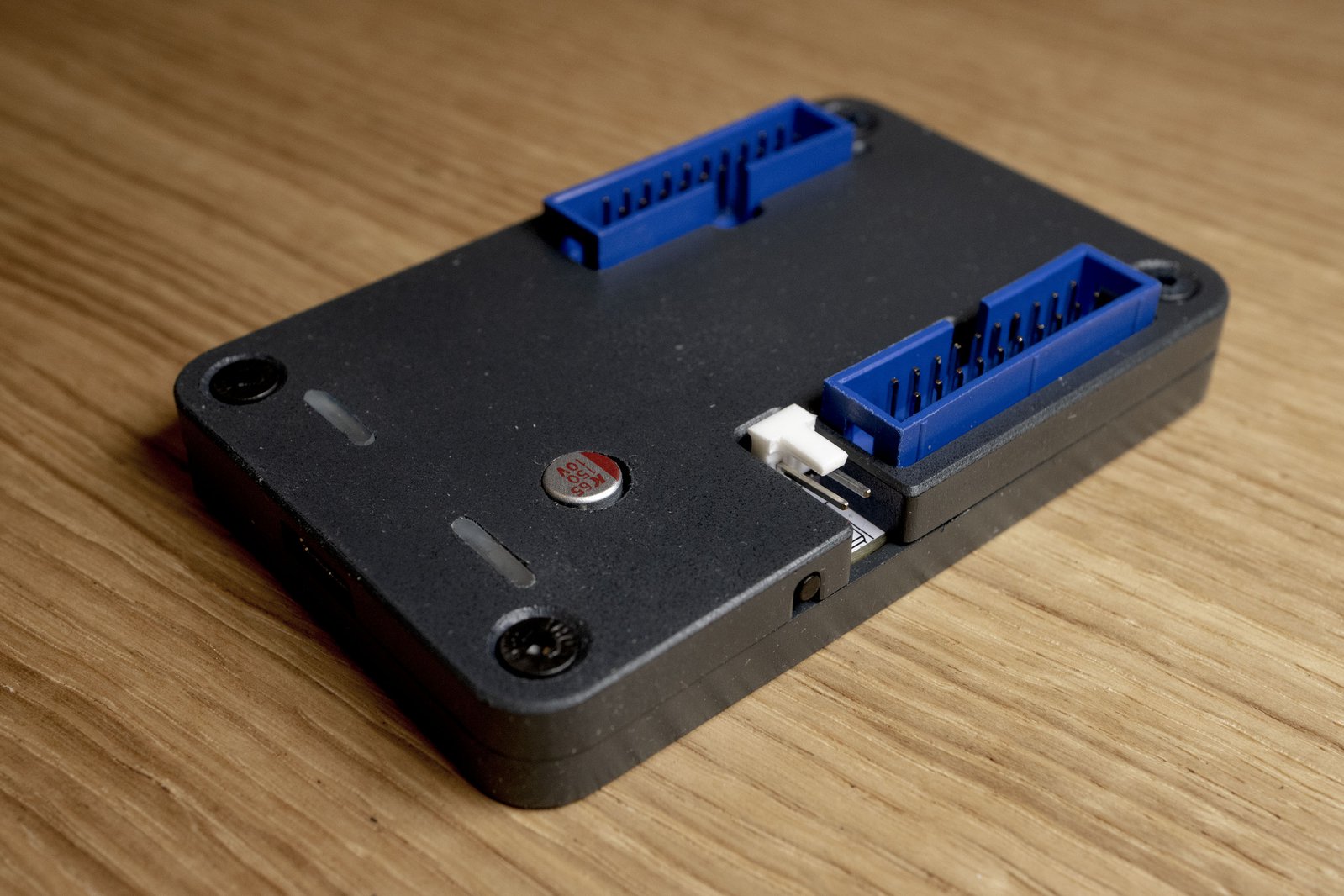
Glasgow Interface Explorer
- Brand: Crowd Supply
- Product Code: NR-CS-Glasgow-Interface-Explorer
- Reward Points: 232
- Availability: In Stock
-
रo 23,084.00
- Price in reward points: 23271
-
- 2 or more रo 21,852.00
- 3 or more रo 21,329.00
- 6 or more रo 20,811.00
Available Options
Related Products
iCEBreaker FPGA
The iCEBreaker is easily expandable through its Pmod connectors, so you can make use of a large sele..
रo 9,214.00
PolarFire SoC Icicle Kit
The Icicle Kit is the first development board for the groundbreaking PolarFire SoC, the world’s firs..
रo 71,134.00

